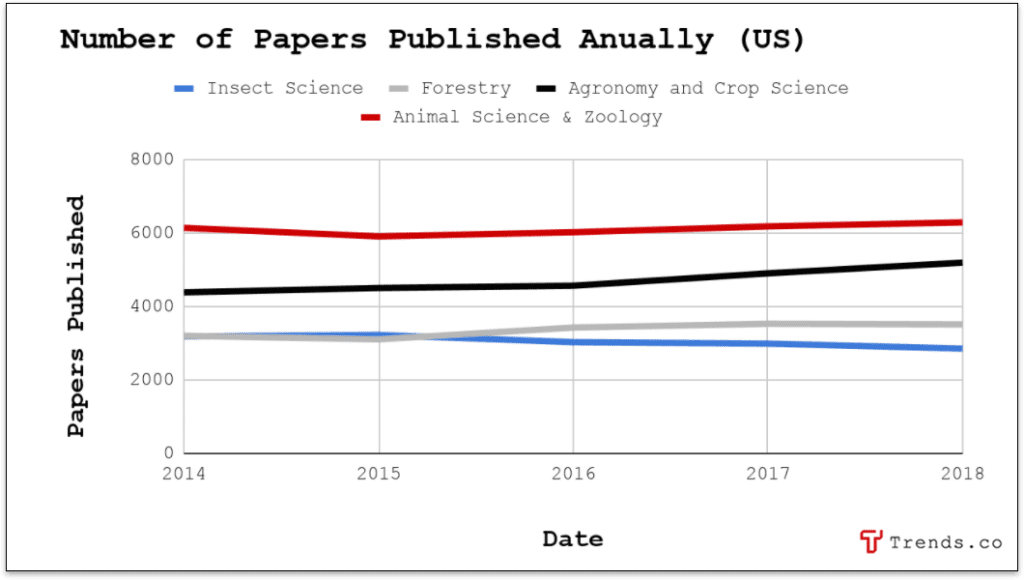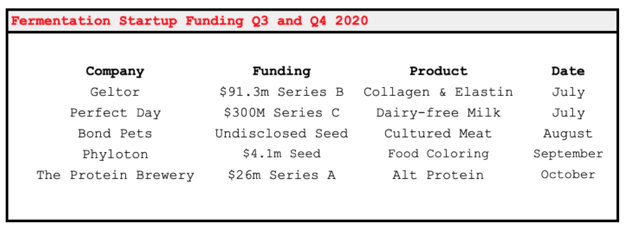nlopchantamang.com
The Growing Buzz Over Insect Monitoring
Ethan Brooks

The Signal: Investments in insect monitoring are rising as the field of agricultural technology continues to grow. Tools that use sensor technology to monitor and report on insect populations are becoming increasingly important to farmers around the globe. However, the level of venture investment hasn’t come close to matching the value that these technologies could offer, and competition is extremely low.
AgFunder, a VC fund focused on food and agriculture, keeps a list of AgTech startups, including those in the insect sensing and monitoring space. To date, the 11 companies in that group have received a total of just $8.5m in VC funding, according to Crunchbase. Yet bees alone (which are in danger because of colony collapse caused by climate change, invasive species, and loss of habitat) have been estimated to contribute to between $235B and $577B worth of annual global food production through pollination, while invasive species like the Asian citrus psyllid, or the spotted lanternfly cause an estimated $120B in damages to the environment in the US alone each year.
The Opportunity: Insects play an important role in the health and wellbeing of human civilization, from pollination of crucial crops to the decimation of others. However, the way we deal with insects has been imprecise -- spraying pesticides widely, for example. But improvements in sensor technology are changing that, creating opportunities to innovate in areas such as:
Hive Health: While some crops like wheat are wind-pollinated, most commercially grown foods -- about 84% -- rely on insect pollination. Much of that is managed by commercial beekeepers.
One of the most challenging issues beekeepers face is monitoring the health and productivity of their hives. Beekeeping contracts require beekeepers to prove that their hives have enough active bees to pollinate crops. Typically, this involves live inspections of the hives, which are dangerous because the inspection causes a lot of disturbance and risks killing the queen.
Startups like BeeHero and The Bee Corp have risen to help with these challenges. BeeHero offers in-hive sensors that track everything from temperature to the audible volume of the bee colony in order to compile a picture of hive health. The Bee Corp, on the other hand, has an app called VeriFli that uses IR sensors on your phone to allow you to "see" the state of the hive without opening the box.

However, traversing thousands of acres to scan hundreds of hives with a smartphone takes a lot of time. So there may be an opportunity to use thermal drones to collect hive data. Drones and software could be sold as standalone products, or offered as a service to farmers or beekeepers during the pollination season.
Other people aside from growers -- like backyard gardeners, or those allergic to bees -- might be interested in information about the state of nearby beehives. You could license the data directly from an existing startup like BeeHero and produce your own paid service for non-farmers.
Pest Monitoring: More than 60% of the VC funding going into insect monitoring startups has gone to companies focused on pest monitoring. The American Plant Health Inspections Service (APHIS) estimates that invasive species cause $100B+ in damage in the US each year, much of that in the form of lost crops.
FaunaPhotonics has developed sophisticated in-field cameras that measure insects’ size, color, and wing-beat frequency in order to ID them mid-flight. Their goal is to combine this with smart spraying machines that could deliver pesticides more precisely, minimizing the negative effects of those chemicals.
The wide range of invasive species means that there are lots of opportunities to build small, specialized solutions that focus on a single pest or industry. For example, a 2015 article by CBS News reported that the Asian citrus psyllid, an insect smaller than a grain of rice, had cost the US citrus market more than $4B in damaged and dying trees in just a few years. Developing a specialized solution just for that industry could help you capture market share quickly, and since many farmers grow more than one kind of crop, a single quality solution could be the lead domino to a successful series of products.
Research: In 2018, there were more than 2.8k scientific papers on insect science published in the US alone, according to the Scimago Journal and Country Rank, a public resource that reports on scientific literature in each country. Thousands more were published in the fields of forestry (3.5k), agronomy and crop science (5.2k), and animal science & zoology (6.2k).

Many of these papers deal with topics like the flight patterns of migrating insects over time, or the feeding habits of insects that carry disease. This type of research can be expensive to carry out on the ground. Researchers might pay for access to a database of information collected from a network of sensors on farms or residential properties around the country.
While you could develop this hardware yourself, it would be interesting to piggyback on existing systems. Smart speakers like Alexa, for example, are widespread and becoming more sensitive to sound. By building an app designed to detect the sound of certain insects, and releasing it as an Alexa skill, you could access a wide network of observation points with relatively low overhead.


Leave a Comment